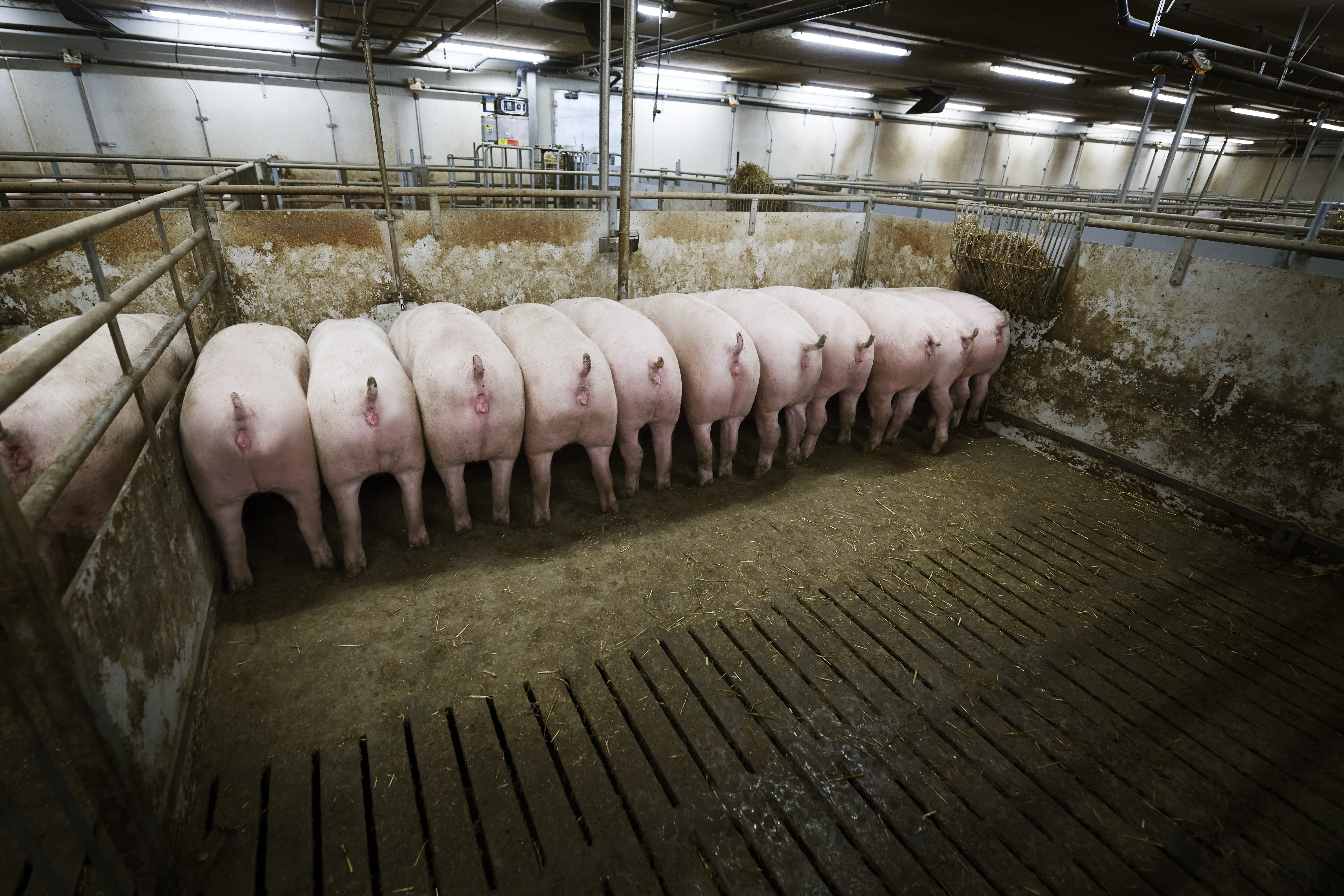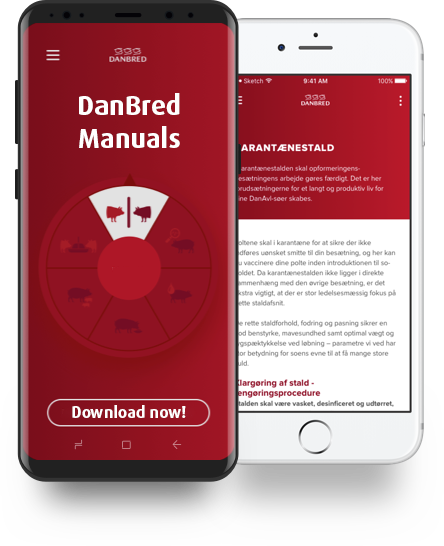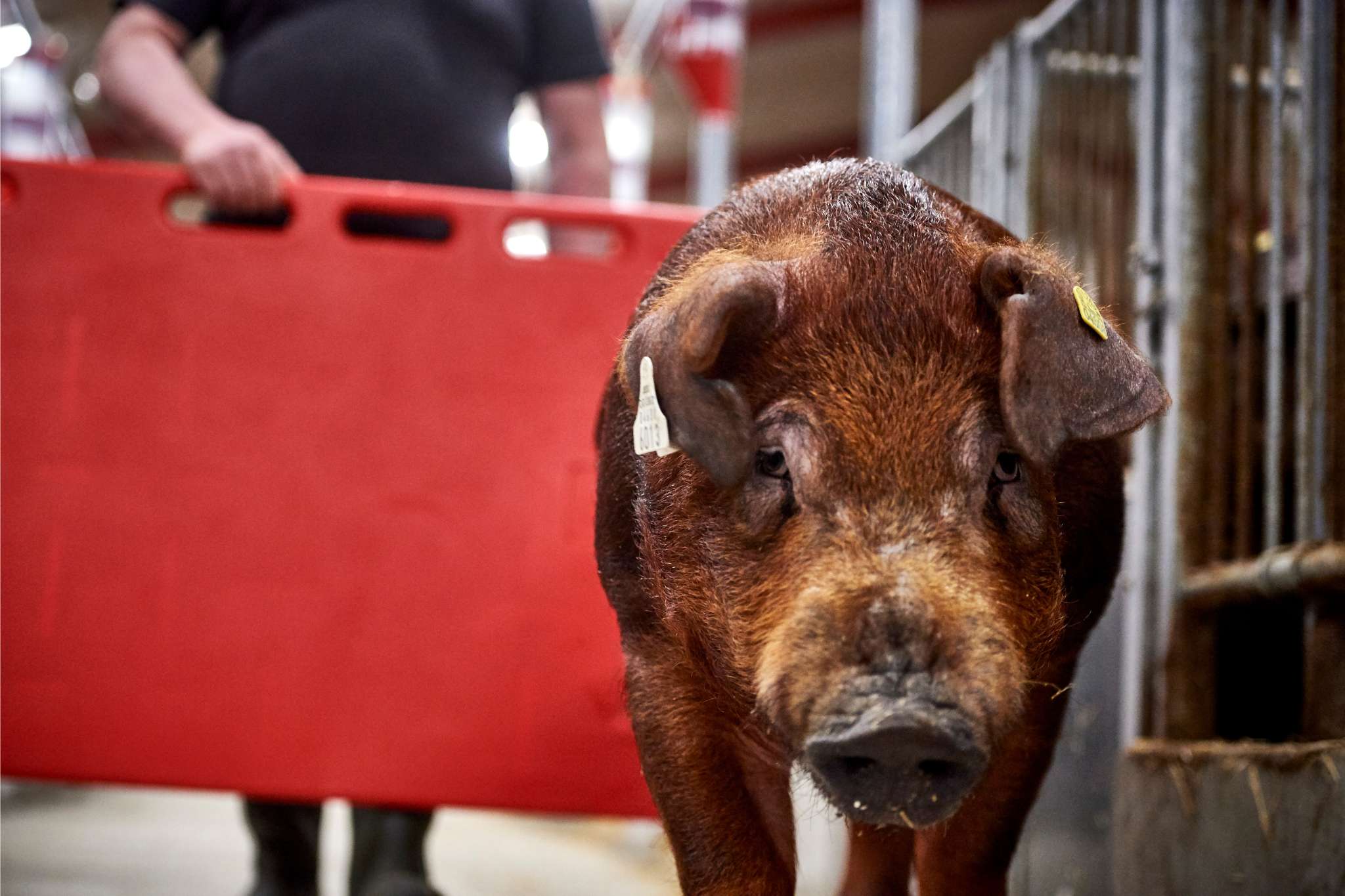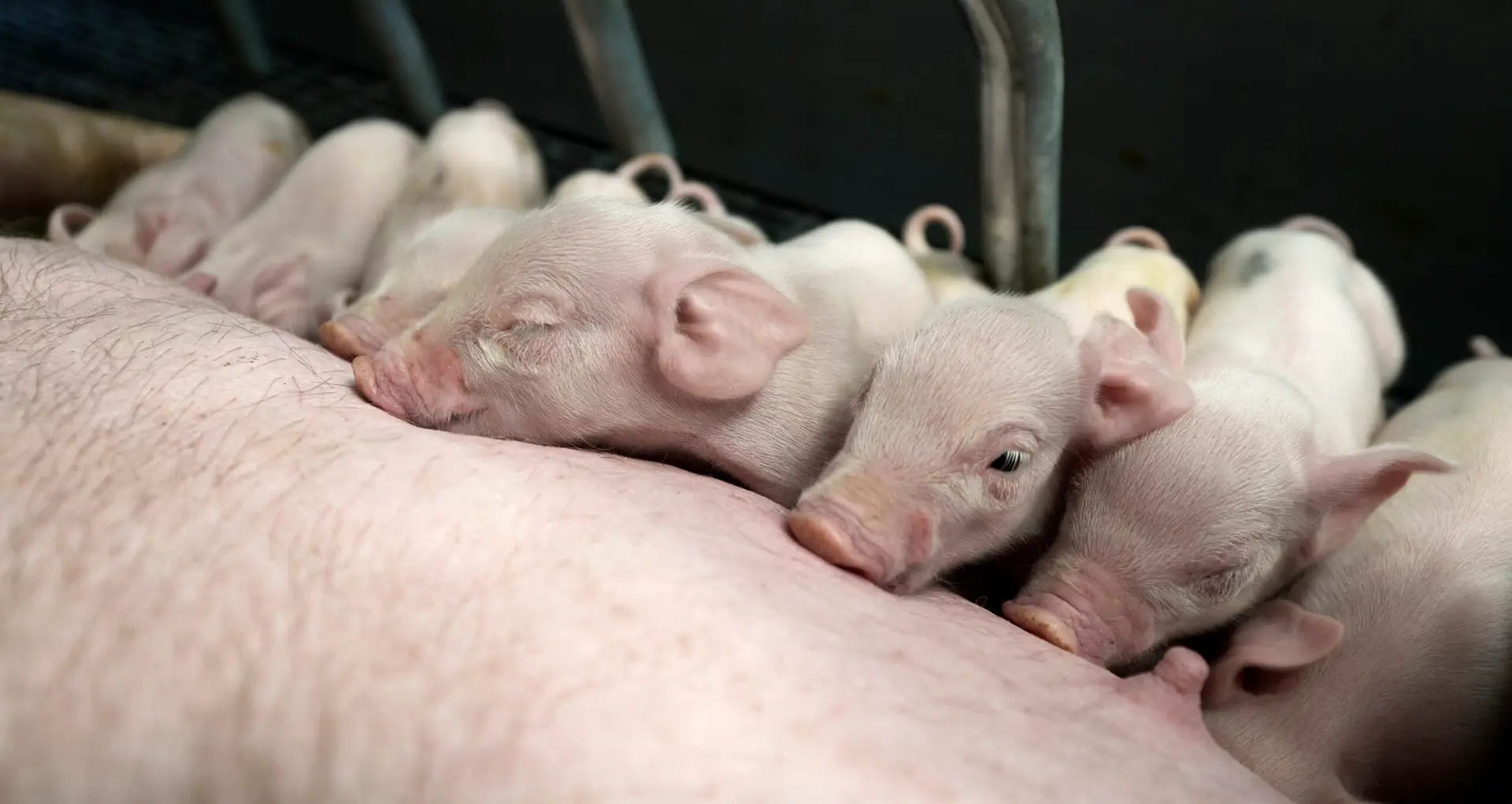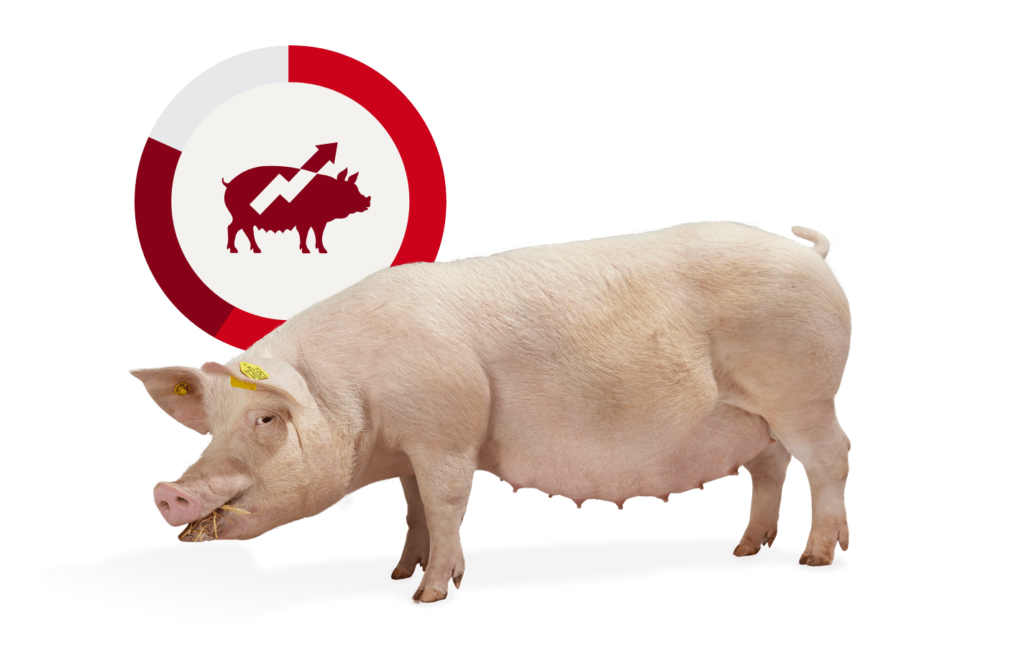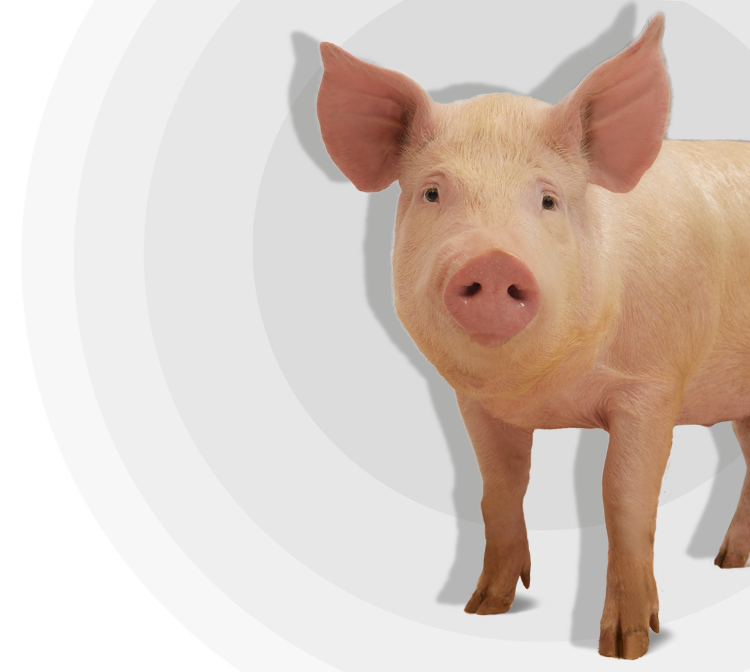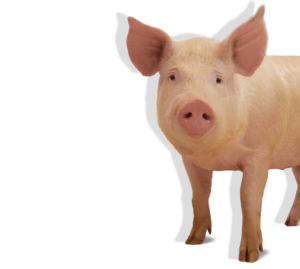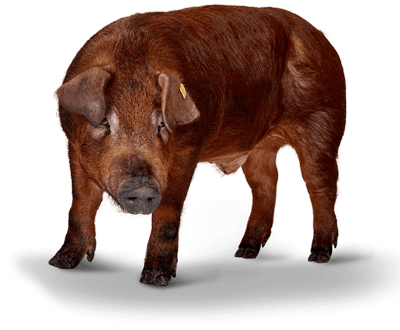By Thomas Sønderby Bruun, Senior Specialist, SEGES Danish Pig Research Centre
Abstract: Maximizing litter size in first parity is of outmost interest to optimize herd productivity. Boar exposure should be used strategically at the right gilt age and weigt to induce first heat. This allows the staff to plan the time for first service in the second heat and thereby to plan when to start the flushing period.
Flushing in second heat has the potential to improve litter size in first parity. To discover the effects of flushing on hyper-prolific DanBred gilts, a large-scale experiment was conducted. Close to 2,000 gilts were randomized to one of four flushing strategies, and besides the flushing strategy, all routines, i.e. use of altrenogest, were the same in all groups. Gilts that received no flushing had a daily feed allowance of 2.33 kg, whereas flushing provided 3.30 kg/day. Results showed that flushing from 5–7 days prior to and until first service increased litter size by 0.4 total born piglets , whereas a 23–25 day flushing period did not affect litter size. Farrowing rate was unaffected by flyshing strategy, and were generally high (>94%).
In conclusion, DanBred gilts should have at least 12 mm of backfat at first service at an age of 230–250 days and a weight of 130–155 kg. The use of diets with 6.1–6.3 g/kg of SID lysine is recommended in the rearing period. Flushing should be initiated 5–7 days prior to service, by increasing the feed allowance from around 2.8 to 3.4 kg/day in order to maximize litter size. Immidiately after service, feed allowance should be decrased to 2.2–2.4 kg/day for approx. 4 weeks.
Maximize litter size in first parity
One goal of todays DanBred gilt is to maximize litter size in first parity to increase herd productivity. As of today, it is not unusual to reach >18.5 total born piglets per litter in first parity.
Introduction of the boar to synchronize gilts
The boar has great influence on age at first heat (van Wettere et al. 2006; Amaral Filha et al. 2009). This fact emphasizes why boars should not be present in the stable throughout the gilt rearing period. If the boar is introduced at a too early age, this will result in a provoked first heat at a younger age than wanted. Exposure to a boar at the optimum age has been shown to synchronize gilts within a pen more efficiently (van Wettere et al. 2006) and less variation within pens improves gilt flow and makes work a lot easier.
Right age at first boar exposure and at first service
The recommended age at first service for DanBred gilts is 230–250 days. It is beneficial to service the gilts in their second heat because this will increase the number of total born piglets per litter (Beltranena et al. 1991; Thorup, 2009). Therefore, exposure to a boar should then be in time for detection of the first heat, i.e. around 200 days of age. There is no need to wait for a third heat, because this does not increase litter size further (Thorup 2009).
Flushing prior to second heat
The main purpose of flushing is to increase the feed allowance drastically prior to the second heat to increase the number of ovulations. The potential of flushing is to some extent due to an increased level of circulating levels of insulin, which has shown to stimulate the number of ovulations (Cox et al. 1987). The effect of flushing is well documented (Flowers et al. 1989; Beltranena et al. 1991; Cox et al. 1987), however, major changes in genetics due to selection has been applied since, which underlines the importance of investigating the effect of flushing of high-yielding DanBred gilts.
Flushing should be terminated after first service
A low daily feed allowance, corresponding to 2.2–2.4 kg/day after service is recommended. Conflicting results regarding effects of high feeding levels in early gestation exists. Some studies have revealed that circulation levels of progesterone decreased at high feeding levels (Prime and Symmonds, 2009), and low levels of progesterone increased early fetal mortality rate (Jindal et al. 1996). A practical implication is thus to immediately move serviced gilts out of the pen where flushing is still applied to the other pen mates in order to avoid negative effects on litter size.
Flushing of DanBred gilts
In 2017–2018 a large-scale experiment was conducted in a commercial DanBred herd with >6,000 sows located in Russia. All gilts were randomized at first heat to ensure same age at first service and to study the effect of four different flushing strategies (Figure 1). The flushing strategies were initiated based on the sexual cycles, and covered either the luteal phase, the follicular phase or both. Furthermore, a negative control with no flushing were applied. After entering the service unit, an 18-day altrenogest treatment was used to synchronize heat. Thereby, it was possible to control the length of the luteal phase, and hence, to standardize the time of ovulation. Gilts that did not respond to altrenogest treatment and gilts that showed heat within 10 days after treatment were excluded from the experiment. After service all gilts were fed 2.23 kg of feed until day 28 of gestation, using a diet containing 6.1 g/kg of SID lysine.

Figure 1 – Overview of flushing strategies used in an experiment with DanBred gilts. The “Low” and “High” feed allowance was 2.33 kg/day and 3.30 kg/day, respectively. Flushing periods were applied based on luteal/altrenogest phase (day 0-18) and follicular phases (day 19-25) in cyclic gilts.
Experimental results and discussion
The farrowing rate did not differ between treatments and was 94.0-95.5 % irrespective of treatment (Figure 2). The average number of total born piglets from first parity sows (16.1 piglet per litter) were lower than detected in a cross-sectional analysis of 21 Danish herds with high productivity (17.3 piglets per litter; Bruun & Vinther, unpublished). Still born piglets were as low as 2.1–2.4% of total born piglets (data not shown). The experiment showed that flushing the gilts from 5–7 days prior to first service, i.e. from end of altrenogest treatment and until they have been serviced (Low-High) increased the number of total born piglets per litter by 0.4 compared with the control treatment, Low-Low (Figure 2). Feeding High-High or High-Low did not result in a change in litter size compared with Low-Low. The results also demonstrated, that a prolonged flushing period was able to increase backfat thickness at first service (Figure 2), which may be beneficial in herds with gilts being too lean at first service. Gilts in this study were fed ad libitum until entering the service unit, however, this is not recommended due to potential negative effects on longevity and due to a higher weight at first service. This might further have decreased the effect of flushing because gilts in high body condition may not respond to flushing in the same way as more lean gilts (Beltranena et al. 1991).

Figure 2 – Effects of flushing strategy on farrowing rate, backfat thickness, total born piglets per litter and age at first service. Bars marked with different a,b indicates that values are statistically different (P<0.05) from the control treatment (Low-low). A total of 1991 gilts were included in the experiment.
Implications
It is recommended that DanBred gilts have at least 12 mm of backfat and a weight of 130-155 kg at first service at an age around 230–250 days (second heat). This is obtained by using a diet in the rearing period that has a moderate lysine level of 6.1– 6.3 g/kg of SID lysine and by using the recommended feeding curve for DanBred gilts. After detection of first heat, flushing (i.e. minimum 3.4 kg of feed/day) should be initiated at 5–7 days prior to expected service in second heat, and feed allowance should be decreased to 2.2-2.4 kg/day when the gilts are serviced in order to maximize litter size.
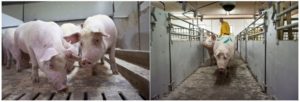
Figure 3 – Keep gilts and boars separated during the rearing period and use boar exposure at the right age as a tool to optimize litter size in first parity sows. Moving gilts to the boar ensure that gilts at a lower age in the section is not exposed at too early age (Copyright: DanBred).
References
Amaral Filha, W.S.; Bernardi, M.L.; Wentz, I.; Bortolozzo, F.P. (2009): Growth rate and age at boar exposure as factors influencing gilt puberty. Livestock Science. 120: 51-57.
Beltranena, E., Foxcroft, G.R.; Aherne, F.X.; Kirkwood, R.N. (1991): Endocrinology of nutritional flushing in gilts Canadian Journal of Animal Science. 71:1063-1071
Cox, N.M.; Stuart, M.J.; Althen, T.G.; Bennett, W.A.; Miller, H.W. (1987): Enhancement of ovulation rate in gilts by increasing dietary energy and administering insulin during follicular growth. Journal of Animal Science. 64: 507-516.
Flowers, B., Martin, M.J.; Cantley, T.C.; Day, B.N. (1989): Endocrine Changes Associated with a Dietary-Induced Increase in Ovulation Rate (Flushing) in Gilts. Journal of Animal Science. 67: 771-778.
Jindal, R., Cosgrove, J.R.; Aherne, F.X.; Foxcroft, G.R. (1996). Effect of nutrition on embryonal mortality in gilts: association with progesterone. Journal of Animal Science. 74: 620-624.
Prime, G. R.; Symonds, H.W. (2009): Influence of plane of nutrition on portal blood flow and the metabolic clearance rate of progesterone in ovariectomized gilts. The Journal of Agricultural Science 121: 389-397.
Thorup, F. (2009): Optimalt brunstnummer ved løbning af polte (Optimum heat number for first service in gilts]. Publication no. 856, Danish Pig Reserarch Centre. [Access date: 11 July 2019].
van Wettere, W.H.E.J.; Revell, D.K.; Mitchell, M.; Hughes, P.E. (2006): Increasing the age of gilts at first boar contact improves the timing and synchrony of the pubertal response but
does not affect potential litter size. Animal Reproduction Science. 95: 97-106.
By Thomas Sønderby Bruun, Senior Specialist, SEGES Danish Pig Research Centre. Contact: [email protected]

